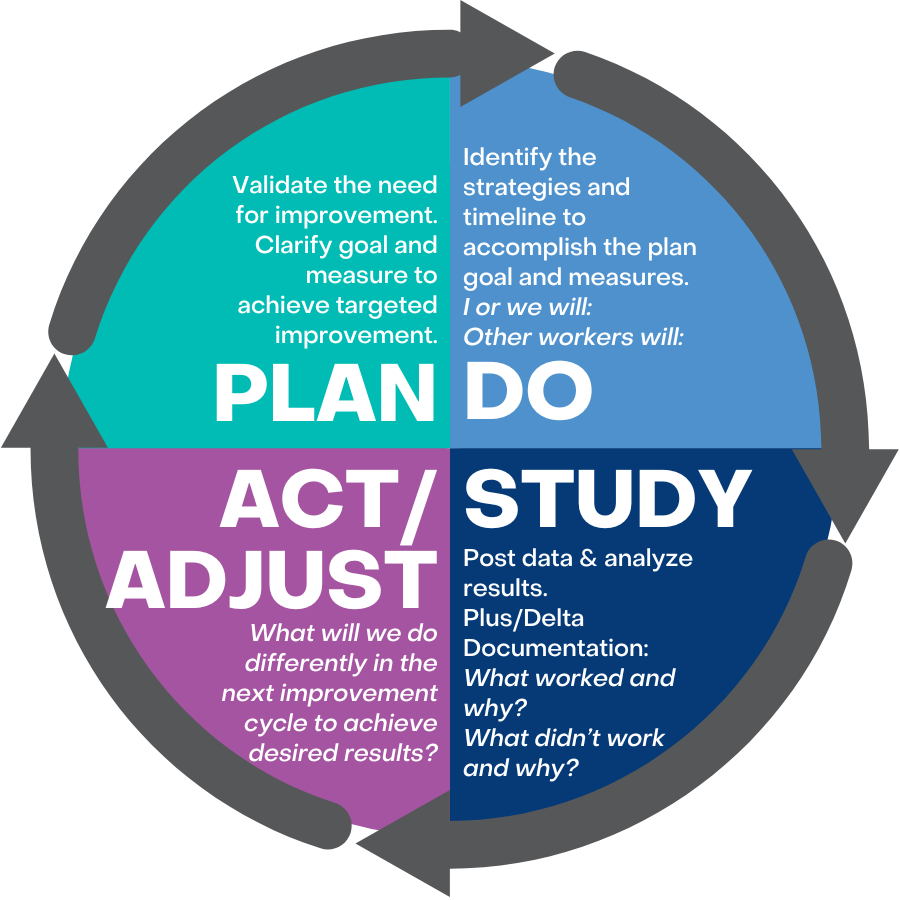
Planning & Assessing Continuous School Improvement: Implement the PDSA Process & Template
If we are truly on a journey to continuously improve, we must nurture a culture of inquiry where asking questions – even difficult questions – is valued. In this culture, perceived failure and flaws are seen as opportunities to learn and improve.
– OEA

INTRO
This Plan, Do, Study, Act/Adjust (PDSA) template is designed to help district, building, and teacher leaders connect actions taken to the direct results impacted by the actions.
The PDSA format requires leaders to validate the need for improvement with clear goals and measures, identify the strategies and timeline to accomplish the goals and measures, study the implementation of the actions through both quantitative and qualitative data analysis, and then make decisions on what can remain in action or what needs to be adjusted in order to achieve the desired goals.
OBJECTIVES
- Aid in making connections between actions taken and results garnered
- Answer the question: How do we know that our change is an improvement?
THE PDSA PROCESS

![]()
District and building leaders are encouraged to collaboratively identify one process in which to implement the PDSA continuous improvement cycle approach with all staff.
![]()
This identified process can start with an academic goal, or it can start with an operational goal such as dismissal procedures. It will be important to identify a goal that the entire staff can engage with in order to fully understand each step of the PDSA structure.
![]()
Once engaging in an initial PDSA structure, scaffold the utilization of this formalized process for continuous improvement throughout grade level teams and/or content areas.
![]()
Ensure to celebrate quick wins in utilizing the PDSA approach, and encourage the use of this process as a coach and supportive advisor during the initial implementation, active application, and sustained use of this continuous improvement cycle.
![]()
It is vital to embrace the PDSA structure as a leader in order to “walk the talk” of a continuous improvement mindset.
TIPS
- Check out this Toolkit resource for applying the PDSA model to work cycles for teams (and additional PDSA templates)











Responses